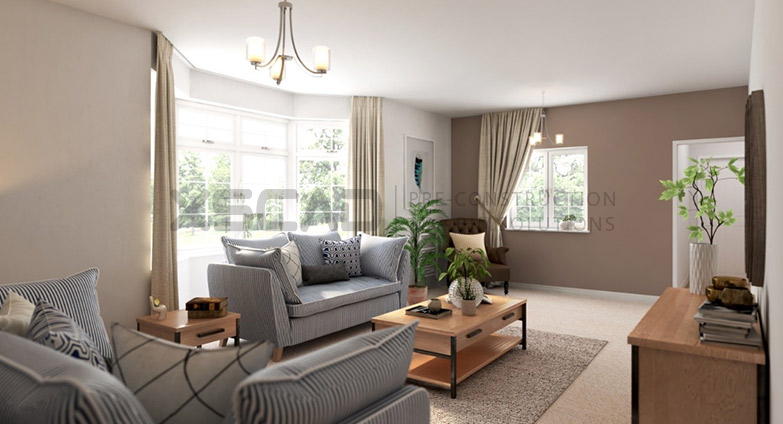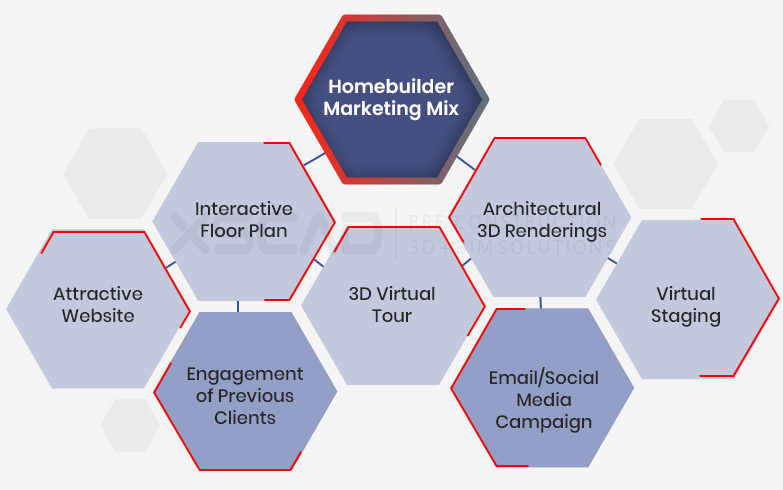Our Articles

Photorealistic 3D Rendering: A Perfect Fit for Homebuilders’ Marketing Mix
Not to spill the beans, but more effective marketing sells more homes. Marketing can be made effective by providing customers with the right information in an easy-to-understand visual format, while ensuring that all the communication is clear. Homebuilders cater to diverse people who have different tastes. Bearing this aspect in mind, every project requires a unique approach for planning, designing, promoting and building. Some people may desire to own urban homes that suit their sophisticated suburban lifestyle; others in metropolitan cities prefer smaller, ergonomic and functional spaces, owing to the high cost of living. Finding the right 3D rendering services and 3D visualisation services to help them, homebuilders can develop photorealistic 3D rendering to tip the scales firmly in their favour.

Since homebuilding is essentially a service provided to potential owners, homebuilders are expected to get the seven ‘P’s of service marketing right. These include product, price, place, promotion, physical environment, process and people. Photorealistic 3D rendering and visualisation is potentially one of the most important techniques that the homebuilders can employ to take care of the ‘promotion’ and ‘physical environment’ aspects of marketing.
Simply put, rendering is a process of representing 3D mathematical models and scenes, which feature details like textures, materials and lights (internal and natural lighting conditions) in 2D formats. The final output accurately represents the vision, scope and is as true to life as possible. Based on the scope of work, details may vary. For instance, interior 3D renderings may show details of all furnishings, surfaces or light fixtures. External renderings may show natural external lightings/shadows and how they react with other elements, such as landscapes, walkways, entrances, roofs, etc.
So far as the ‘promotion’ aspect of marketing is concerned, photorealistic renderings can help communicate the fine nuances of home design via various marketing channels to the target audience.
Furthermore, 3D rendering and visualisation can help homebuilders accurately demonstrate the ‘physical environment’ of their designs to their prospective customers.
In addition to persuading the potential homeowners about the functional, emotional, and self-expressive benefits of their projects, homebuilders need to ensure that their projects comply with the local building regulations related to:
- Structure
- Drainage
- Hygiene
- Fire safety
- Energy efficiency
- Toxicity
As a result, depending on the size of the project, homebuilders must obtain permissions from the local planning authorities before proceeding to the construction stage. Detailed stills of various views derived from photorealistic 3D rendering can also prove helpful in facilitating timely approvals while saving time for homebuilders and the entire project team.
Ideally, the homebuilder’s marketing mix should ideally include the following:

Attractive Website
Modern circumstances have converted websites into virtual offices and display spaces. It’s the first stop for potential customers looking for a new home, making it imperative that a homebuilder’s website is attractive and professional. Some of the ways to make that so are attractive presentation and information-rich content. Using 3D renderings, virtual tours and virtual staging of property is effective and vivid, along with providing detailed information on the website. Precise design details, how the finished building will appear and the different options available, along with dimensions, must be provided on the site.
Interactive Floor Plans
It allows the end user (clients) to choose the right floor plan or customise floor plans as per the clients’ choice. One can choose furniture, may flip plans, add or remove a garage, etc.
Virtual Tour
Tours of the property can be made available on a homebuilder’s website so that it can be downloaded easily for future reference, where potential customers can view and show others what the finished home will look like. Viewers can walk from room to room in a virtual space and even walk outside to view the immediate surroundings. Photorealistic rendered images can be created of any particular aspect of the tour for further discussion or modification. Marketing professionals can make optimum use of this feature.
Architectural 3D Renderings
Flat 2D floor plans can be brought to life with 3D architectural renderings, helping customers visualise both interiors and exteriors in detail. Moods can be created, concepts can be illustrated, and viewers of 3D architectural renderings can see what the space will look like from any angle, helping them make crucial decisions on design. These renderings may even save the costs and time associated with creating physical models.
Virtual Staging
Making homes livable through realistic furnishings can make a difference in the minds of customers. Thus, staged showings of properties are invaluable. Homebuilders used to spend a significant amount of money on fabrics, furniture, art, light fixtures and other furnishings to stage a home. Now, advanced software enables rendering services providers to create a space with a wide range of options in items, colours, lighting, fabrics, textures and exteriors for a fraction of the cost of a physical staging.
Engagement of Previous Clients
Even with attractive, functional and well-designed properties, sometimes attracting new clientele can be challenging for homebuilders. Clear and constant communication should be offered to prospective customers, where they are provided detailed information and realistic visualisation. It can also be beneficial to engage with previous customers who have has satisfactory dealings with the homebuilders in the past. These customers could be residing in one of the properties sold by the homebuilder and can be used as references or could be repeat customers. They can accurately interpret and explain 3D renderings for potential customers – a valuable verbal endorsement for the homebuilder.
Email Campaign
Marketing properties through emailers are non-invasive and reach more people with minimal effort and cost. By introducing a valuable offer with an attractive 3D rendered image, those that open the email will undoubtedly view a property option and be interested in its details.
Social Media Campaign
Using 3D architectural visualisation services and creating 3D rendered images, which may be displayed in social media to market properties can be a wise endeavour by homebuilders.
When large homebuilders find a 3D rendering services provider that suits their needs, the ingredients mentioned above will readily become part of their marketing mix. In the face of increasing global competition, high-quality photorealistic 3D rendering services and 3D visualisation services may be sourced overseas. Typically, the advantages with offshore 3D architectural visualisation service providers are that they have a large bank of rendering professionals, varied experience in the industry, a thorough grasp of rendering software and are cost effective. This enables large homebuilders to concentrate on effective marketing campaigns to encourage sales.
XS CAD has valuable experience as a 3D architectural visualisation services provider, providing BIM modelling services, 3D visualisation services, 3D rendering services and homebuilders’ 3D rendered images for global firms. Our range of services for architects, contractors and homebuilders across the world include 2D architectural drafting, 3D BIM modelling and residential 3D rendering services.

